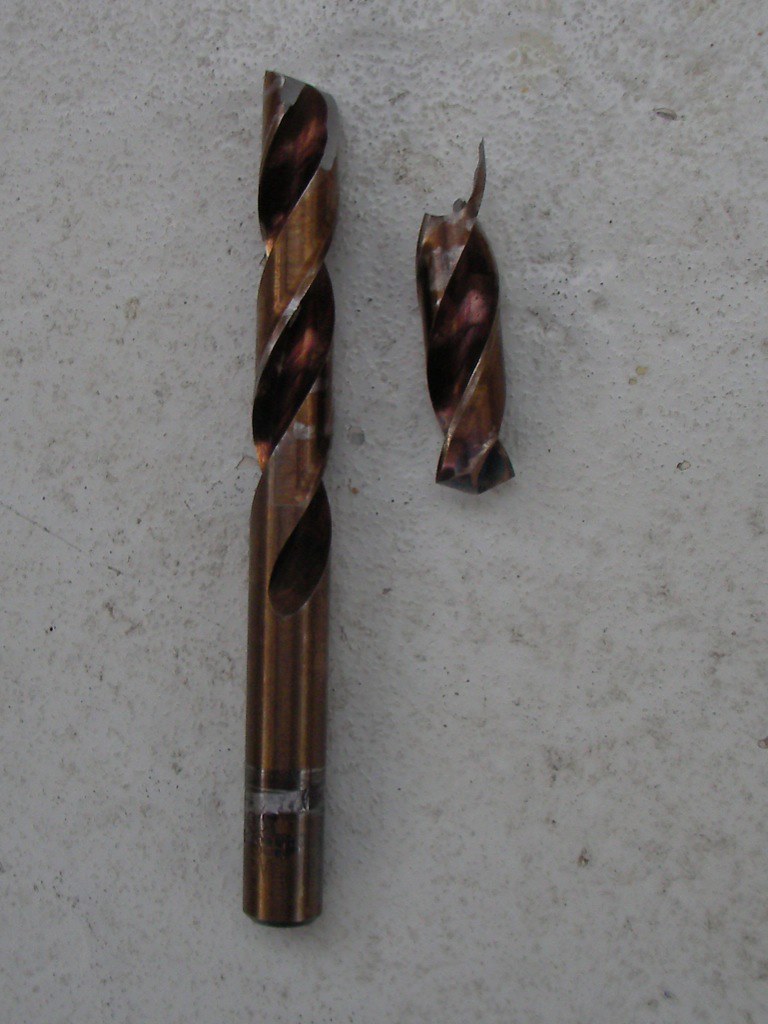
Understanding the Conundrum:
You’ve set your sights on a DIY home project, gathered all your tools, and you’re raring to go. However, something disrupts your symphony of productivity. Your drill bits keep breaking. It’s like they’ve developed an uncanny fondness for the afterlife, bidding goodbye one after the other, leaving you in a lurch. But why does this happen? Let’s plunge into the core of this frustrating phenomenon and unearth its secrets.
Drill bits are the star performers in the orchestra of your power tools, carving, and sculpting with finesse to help you achieve your DIY masterpiece. When they start breaking, it’s like losing your lead violinist mid-concert, causing disarray and chaos. And it’s not just the disappointment or the halt in progress; it’s also the increased costs from having to frequently replace them. That’s why understanding why your drill bits keep breaking is crucial, not just for your project’s success but also for your wallet’s well-being. Let’s embark on this journey of discovery, unmasking the culprits behind this unsolicited disruption.
The Ghost in the Machine: Material Misalignment
Navigating the drill bit material landscape can be akin to a seafaring voyage in uncharted waters. The right bit material for the job can be elusive, but it’s out there. If you’ve got a tough-as-nails material to drill through, cobalt or carbide might be your champions. Diamond drill bits, although more expensive, are incredibly durable and can make mincemeat out of materials like tile and glass. On the other hand, softer woods and plastics can be easily conquered by high-speed steel bits. So, when your drill bits keep breaking, the solution could be as simple as using the correct bit for the job, akin to using the right key for a lock. Align your drill bit’s material with the material you’re drilling, and you could wave those pesky breakages goodbye!
Of Temperatures and Torques: The Heat Connection
What if you’re drilling with all the caution in the world, but the heat still proves to be a monstrous adversary? Enter the world of drill cooling. Similar to how a hardworking athlete cools down with a water break, your drill bits can benefit from a cooling strategy too. You can use cutting fluids, also known as coolants, that not only reduce the heat generated during drilling but also prevent the material you’re drilling from warping due to high temperatures. It’s an effective way to address the overheating problem that can leave you wondering why your drill bits keep breaking. Remember, a cool bit is a happy bit, and a happy bit keeps you drilling forward with fewer interruptions!
Are You Pressing the Right Buttons?: Pressure and Speed
In the riveting saga of drilling, it’s easy to get carried away with the power of the tool and the rush of making holes. But excessive pressure and speed are archenemies of drill bits. It’s like driving a sports car at breakneck speed on a rocky road – thrilling, undoubtedly, but also a perfect recipe for disaster. Adopting a slow, steady approach is a better strategy. Let the drill do the work and apply only gentle pressure. This can significantly reduce the instances where your drill bits keep breaking. Remember, being patient with the process can save you from the frustration of a broken bit. Think of it as a form of drilling diplomacy – a slow and steady peace treaty between you and your tools that results in successful projects and fewer broken casualties.
The Bit’s Backstage: The Significance of Lubrication
In addition to regular cleaning and sharpening, one of the most overlooked aspects of drill bit maintenance is lubrication. Applying a little lubricant can go a long way in ensuring a smooth operation and reducing heat generation. It’s like providing your drill bits with their very own superhero suit, shielding them from the villainous heat and friction that can lead to their demise. A lubricated drill bit can cut through materials more smoothly, reducing the likelihood of breakage. Remember, just as a well-oiled machine runs smoothly, a well-lubricated drill bit drills effectively.
It’s Not Just About the Bit: Maintenance Matters
Sometimes, the issue is not with the bit but how it’s treated. Like any tool, drill bits require some TLC to keep them at their prime. Regular cleaning, proper storage, and occasional sharpening can work wonders for extending their lifespan. Neglecting these basic maintenance practices can make them dull and weak, leading to the dreaded breaking scenario. So, if your drill bits keep breaking, it might be time to up your maintenance game.
The Tilted Culprit: Angles and Techniques
Last but not least, your drilling technique can play a pivotal role in the longevity of your bits. Drilling at an angle or with a wobbling drill can place extra stress on your bits, leading to premature breakage. Take a moment before each drill to ensure your tool is straight and steady. Like a professional pool player lining up a shot, precision and accuracy will help prevent those infuriating instances when your drill bits keep breaking.
So, there you have it – the decoded mysteries of why your drill bits bite the dust more often than they should. Understand the material, manage the heat, moderate the pressure and speed, maintain them well, and be a maestro with your technique. With these nuggets of wisdom, you’re all set to conquer your DIY projects without your drill bits waving a white flag halfway through. Happy drilling!
